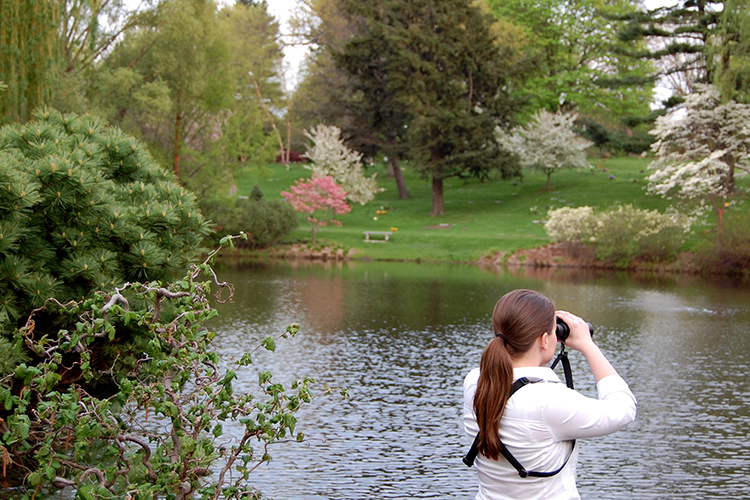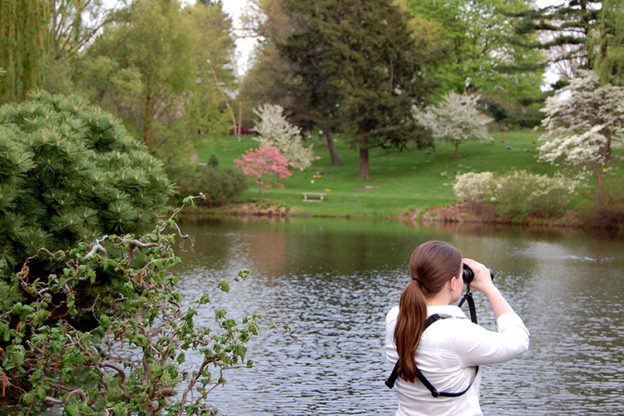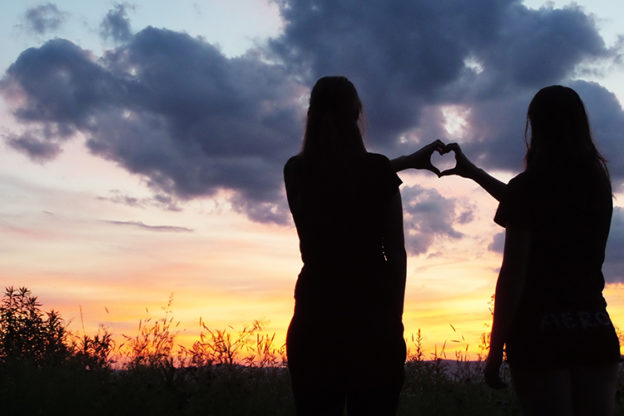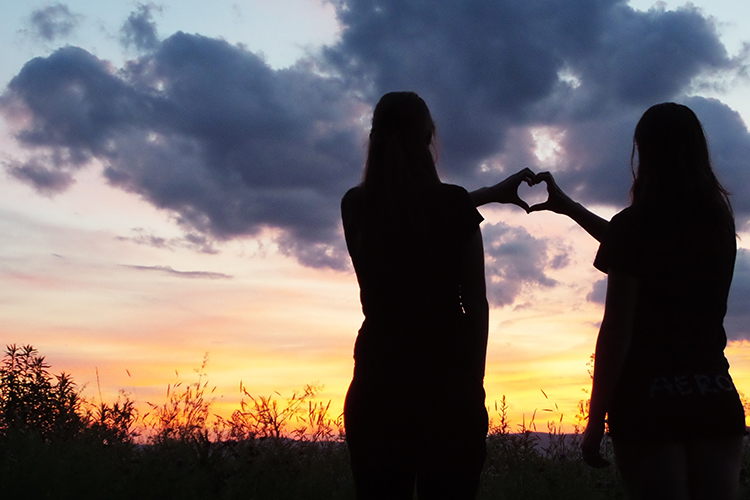While some activities have been on the decline due to staying close to home, one that has seen a surge in interest is birdwatching! If you haven’t already joined in the fun, there’s no better time to start than during Bird-a-thon.
This annual fundraiser prompts teams to spend the day looking for birds and taking part in other nature-based activities, all while supporting our wildlife sanctuaries and programs.
Get in on the action by joining a team and following these easy steps on how to look for birds from Wayne Petersen, Mass Audubon’s Director of Important Bird Area program.

Wake up early. Early in the morning, around 6 am, can be the birdiest time. Birds that migrate overnight are often still active just after dawn so you could see them before they settle into quiet feeding modes for the day.
Listen for bird sounds and watch for movement. Start looking with just your eyes without binoculars. If you spot some movement see if you can get a closer look with your binoculars.
In a wide-open area, scan the far distance with your binoculars slowly to see if there’s anything you’d miss with just your eyes.
Keep your eyes on the sky to look for flying birds, either high or at treetop level.
Take a closer look at groups. If you see several birds together, try to stay with them because there could be several different species in the same area. Birds often forage together in small groups in the same places.
Find nearby thickets or weedy areas. Be sure to check them for any birds that might be hiding or quietly feeding.
Look for exposed bare branches and dead trees for perched hawks or woodpeckers first thing in the morning.
Find a nearby pond or streams, paying special attention to their brushy edges. Birds often like to be near water.
Slowly scan open areas, fields, and marshy areas because there are birds in such areas but they are often inconspicuous.
Be patient and stay still! Birds may not be as active or noticeable if you keep moving. Stand in one place quietly and take in the sights and sounds. Birds will often return to their normal behavior if you stop moving and seem like less of a threat.
A Bird-a-thon checklist will help you keep track of what species you identify. If you have a field guide, keep it with you to check species ID, range maps, and other useful descriptions (like behavior).
There are also online apps, like Merlin, that can help you ID birds. A quick Google search can also help you start to narrow down your options as well (though keep location in mind!).
Good luck, have fun, and hopefully find some birds you may never have seen before!




